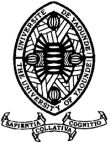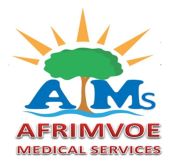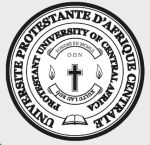Entomological Assessment of Onchocerciasis Transmission in the Disease Persistence Focus of Oulibangala (Chad)
DOI:
https://doi.org/10.5281/hra.v2i4.5504Keywords:
Onchocerciasis, Blackflies, transmission, persistence, elimination, ChadAbstract
RÉSUMÉ
Introduction. La présente étude a été menée en république du Tchad, dans le foyer de persistance de l’onchocercose de Oulibangala et de Kaitia dans l’objectif de collecter des données entomologiques pour comprendre les raisons de la persistance. Méthodologie. Nous avons collecté puis identifié par cytotaxonomie des larves des simulies présentes dans les sites de Oulibangala et de Kaitia. Puis des adultes de simulies ont été capturées et disséquées dans les mêmes sites. Les indicateurs entomologiques de transmission de l’onchocercose ont été calculés. Résultats. Quatre espèces de S. damnosum s.l. ont été identifiés dans la zone, avec S. damnosum s.s. comme vecteur majeur dans la zone d’étude. Pour la première fois, une espèce forestière, S. yahense a été observée dans notre zone d'étude. Un total de 8774 simulies a été capturés dont 7335 à Oulibangala et 1439 à Kaitia. Les densités étaient plus élevées en saison pluvieuse dans les deux sites. Les taux annuels de piqûres étaient de 4986 piqûres/homme/an à Kaitia et de 26938 piqûres /homme/an à Oulibangala, soit 5 à 26 fois le seuil tolérable recommandé par l’OMS. Les taux de parturité des simulies disséquées étaient de 75.04% et 69.09% respectivement à Oulibangala et à Kaitia. Aucune larve infectante de parasite Onchocerca n’a été retrouvée au cours des dissections indiquant ainsi des taux d’infectivité nuls dans nos sites d’étude. Conclusion. La persistance de l’onchocercose dans ce foyer pourrait, en partie, être due à l’existence de densités élevées de vecteurs compétents qui sont majoritairement présents en saison des pluies.
ABSTRACT
Background. The present study was carried out in the Republic of Chad, in the onchocerciasis persistence focus of Oulibangala and Kaitia to collect entomological data to understand the reasons for the disease persistence. Methodology. We collected and identified by cytotaxonomy the larvae of blackflies present in the Oulibangala and Kaitia sites. Then blackfly adults were captured and dissected at the same sites. The entomological indicators of onchocerciasis transmission were calculated. Results. Four species of S. damnosum s.l. were identified in the area, with S. damnosum s.s. as a major vector in the study area. For the first time, a forest species, S. yahense was observed in our study area. A total of 8774 blackflies were captured including 7335 in Oulibangala and 1439 in Kaitia. Densities were higher in the rainy season in both sites. The annual bite rates were 4,986 bites/man/year in Kaitia and 26,938 bites/man/year in Oulibangala, i.e. 5 to 26 times the tolerable threshold recommended by the WHO. The parous rates of dissected blackflies were 75.04% and 69.09% in Oulibangala and Kaitia respectively. No infective larvae of the Onchocerca parasite were found during the dissections, indicating null infectivity rates in our study sites. Conclusion. The persistence of onchocerciasis in this focus could, in part, be due to the existence of high densities of competent vectors which are mainly present in the rainy season.
References
Ayisi, F., Sedou, N., Dieunang, S.K., Yaya, F., Tchago, E. F., Ndellejong, C.E., Biholong, B., & Boakye, D. A. (2022). A cross-sectional study of Simulium damnosum sensu lato breeding sites and species distribution in Sudan savanna, mixed savanna–forest and rainforest regions in Cameroon. Parasites Vectors 15, 382. https://doi.org/10.1186/s13071-022-05462-w
Ayisi F, Souza DK, Tallant J, Biholong BD, Fokam EB, Boakye DA (2024). Onchocerciasis in the Cameroon-Chad border area after more than twenty years of annual mass ivermectin distribution. Research Square, DOI: 10.21203/rs.3.rs-3745872/v1
Boakye DA. A pictorial guide to the chromosomal identification of members of the Simulium damnosum Theobald complex in West Africa with particular reference to the Onchocerciasis Control Programme Area. Trop Med Parasitol. 1993;44:223–44.
Chippaux, J. P., Boussinesq, M., & Prod’hon, J. (1995). Apport de l’ivermectine dans le contrôle de l’onchocercose. Cahiers d'études et de recherches francophones/Santé, 5(3), 149-158.
Davies JB, Crosskey RW. Simulium - vectors of onchocerciasis. Geneva: World Health Organization, Division of Control of Tropical Diseases; 1992.
Diawara L, Traoré MO, Badji A, Bissan Y, Doumbia K, Goita SF, et al. 2009. Feasibility of onchocerciasis elimination with ivermectin treatment in endemic foci in Africa: first evidence from studies in Mali and Senegal. PLoS Negl Trop Dis. 2009;3:e497.
Koala, L., Nikièma, A.S., Paré, A.B., Drabo, F., Toé, L.D., Belem, A.M. et al. (2019) Entomological assessment of the transmission following recrudescence of onchocerciasis in the Comoé Valley, Burkina Faso. Parasites & Vectors, 12(1), 1–9.
Niama, A., Ndziessi, G., Hemilembolo, M., Nkodia, A., Missamou, F., & Kitembo, L. (2019). Prévalence et Charge Microfilarienne de l’Onchocercose dans le Foyer du Bassin du Fleuve Kouilou-Niari en République du Congo. HEALTH SCIENCES AND DISEASE, 20(6).
Noma, M., Zouré, H.G., Tekle, A.H. et al. The geographic distribution of onchocerciasis in the 20 participating countries of the African Programme for Onchocerciasis Control: (1) priority areas for ivermectin treatment. Parasites Vectors 7, 325 (2014).
Nwoke, B. E. B., Oye, J., Kimingar, N., Matchoke, G.Z., Albissaty, S.A., Yotta, N., Kodbaye, N.C.(1998). Rapid Epidemiological Mapping of Onchocerciasis (REMO) in Guera and Salamat prefectures, Republic of Chad. Geneva: World Health Organization, 1998, p. 1-12
Organisation mondiale de la Santé, O., & World Health Organization. (2015). African programme for onchocerciasis control: progress report, 2014–2015. Weekly Epidemiological Record= Relevé épidémiologique hebdomadaire, 90(49), 661-674.
Programme National d’élimination de l’onchocercose et de la filariose lymphatique (PNEOFL) 2015. Rapport d’activités de surveillance de l’onchocercose. Ministère de la Santé Publique et de la prévention du Tchad/
Programme National d’élimination de l’onchocercose et de la filariose lymphatique (PNEOFL) 2021. Rapport d’activités des traitements à l’ivermectine sous directives communautaires dans les régions endémiques l’onchocercose du Tchad. Ministère de la Santé Publique et de la prévention du Tchad/
Traoré-Lamizana M. & Lemasson J-J. Participation à une étude de faisabilité d’une campagne de lutte contre l’onchocercose dans la région du bassin du Logone. Répartition des espèces du complexe Simulium damnosum dans la zone camerounaise du projet. Cah. ORSTOM sér. Ent. méd. et Parnsitol. 1987; 25: 171-186.
Von Noorden, G.K & Buck, A.A (1968). Ocular Onchocerciasis: An Ophthalmological and Epidemiological Study in African Mllage. fuchieves of Ophthalmolo-ey.80,26 - 34
WHO, 1995. Onchocerciasis and its control. Report of a WHO Expert Committee on Onchocerciasis Control. Report no. 852. Geneva: World Health Organization; 1995. p. 1–104.
World Health Organization. (2016). Guidelines for stopping mass drug administration and verifying elimination of human onchocerciasis: criteria and procedures (No. WHO/HTM/NTD/PCT/2016.1).
World Health Organization. World Health Organization. (2021). Ending the neglect to attain the sustainable development goals. A road map for neglected tropical diseases 2021–2030, WHO.
WHO. Onchocerciasis and its control. Report of a WHO Expert Committee on Onchocerciasis Control. Report no. 852. Geneva: World Health Organization; 1995. p. 1–104
Downloads
Published
How to Cite
Issue
Section
License
Authors who publish with this journal agree to the following terms:
- Authors retain copyright and grant the journal right of first publication with the work simultaneously licensed under a Creative Commons Attribution License CC BY-NC-ND 4.0 that allows others to share the work with an acknowledgement of the work's authorship and initial publication in this journal.
- Authors are able to enter into separate, additional contractual arrangements for the non-exclusive distribution of the journal's published version of the work (e.g., post it to an institutional repository or publish it in a book), with an acknowledgement of its initial publication in this journal.
- Authors are permitted and encouraged to post their work online (e.g., in institutional repositories or on their website) prior to and during the submission process, as it can lead to productive exchanges, as well as earlier and greater citation of published work










